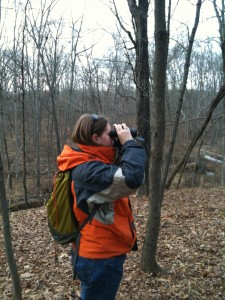
Megan D. Gall, Ph.D.
Professor of Biology
Director of Neuroscience and Behavior, Vassar College
Ph.D., Purdue University
M.S. California State University, Long Beach
B.A. Pomona College
View my C.V.
View my Google Scholar Profile

I consider myself a teacher-scholar and I closely integrate my research and my teaching. I’ve taught a number of “classroom” courses including Introductory Biology, Introduction to Neuroscience and Behavior, Animal Physiology, Research Methods in Physiological Psychology, and senior seminars in Sensory Ecology, Animal Communication, and Neuroscience and Behavior. I also teach intensives, including Biology in Board Games and Conversations with Scientists. Much of this teaching also occurs in my research lab and out at The Preserve at Vassar, with my research students. My research lies in the fields of sensory ecology, physiology, and behavior, with a focus on auditory processing and acoustically-mediated behaviors in birds and frogs. I usually have 5-8 undergraduate students working in my lab on projects ranging from bioacoustics to comparative auditory processing to neuroethology. I include students in every aspect of the research process, from inception to publication.
We ask lots of questions in our lab. Why have different species evolved similar or different auditory systems? What factors (like behavior, life history, habitat) drive the configuration of the auditory system? How have acoustically-mediate behaviors, like animal communication or prey localization, been impacted by the changes human have made to the world (anthropogenic change)? How do natural and anthropogenic factors affect the production, transmission and reception of acoustic signals? To answer these questions my lab members and I use methods and techniques from fields ranging from ecology to physiology to molecular biology. Our work has been published in the Proceedings of the Royal Society B, the Journal of Experimental Biology and the Journal of Comparative Physiology A, among others.

